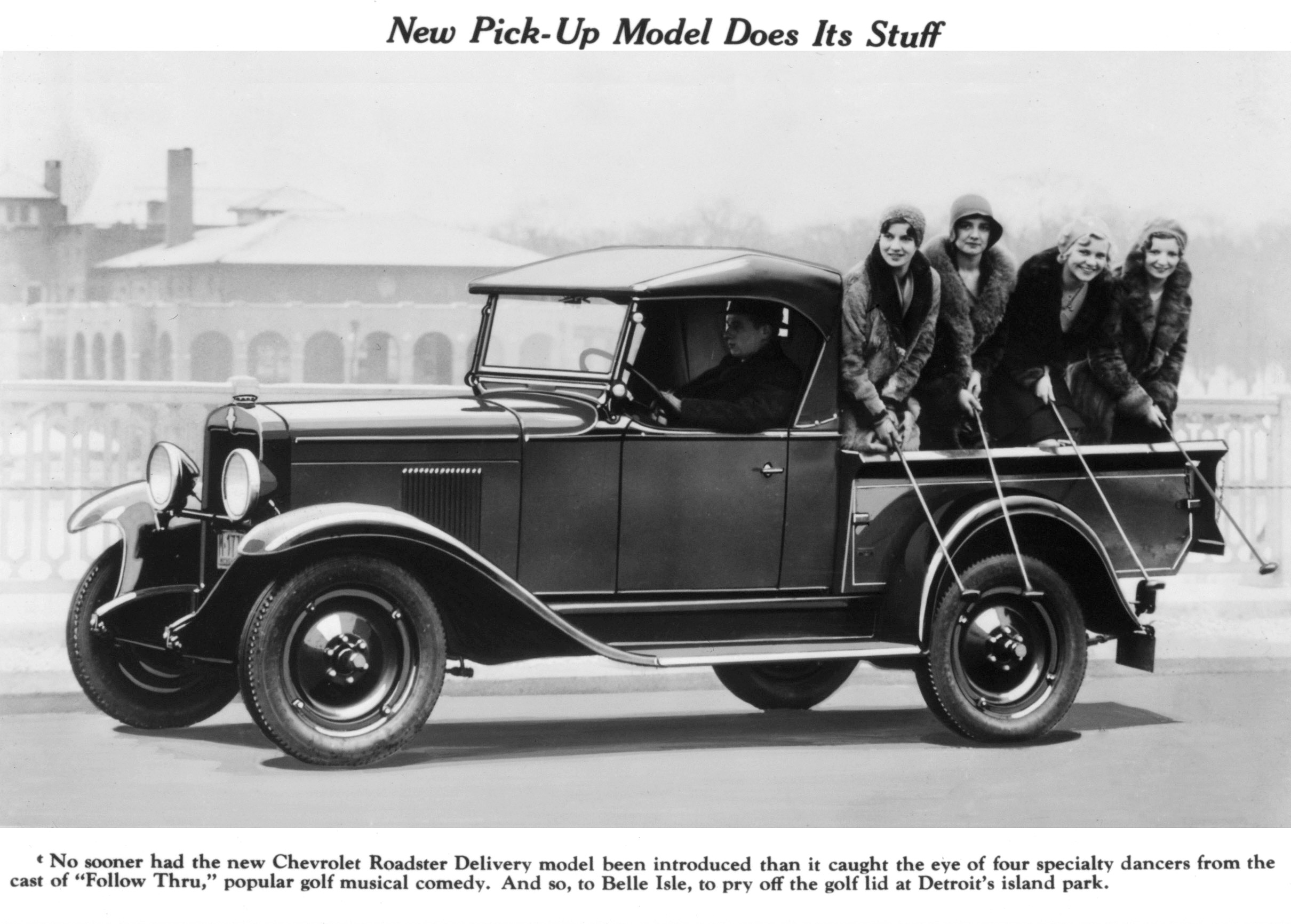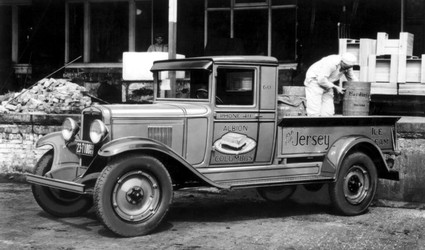Classic Truck History Part 2: Chevrolet Pre-1950
Posted by Jil McIntosh on Jul 16th 2020
Chevrolet Trucks Pre-1950
If GM’s founder hadn’t been loose with the company’s cash, we wouldn’t have Chevrolet today. Most brands started when someone created a car, and then formed a company to sell it. William Durant didn’t. He started buying existing auto companies in 1908 and brought them together into his new General Motors.
But along with good investments like Buick, Cadillac, and Oldsmobile, he also bought several not-so-great ones that strained GM’s finances, and the board of directors kicked him out. He got together with race driver Louis Chevrolet to create a new car and used that to leverage his way back to the top chair at GM in 1911.
In 1918, Chevy introduced a one-ton truck chassis that, for whatever reason, it called the Model T – the same name as the very popular car Ford was selling at the time. Chevrolet had a car called the 490, and you could buy its chassis, equipped with heavier springs, for a light-duty truck. But as was common at the time with several automakers, you had to go to a third-party company to have a body built to turn these chassis into finished trucks.
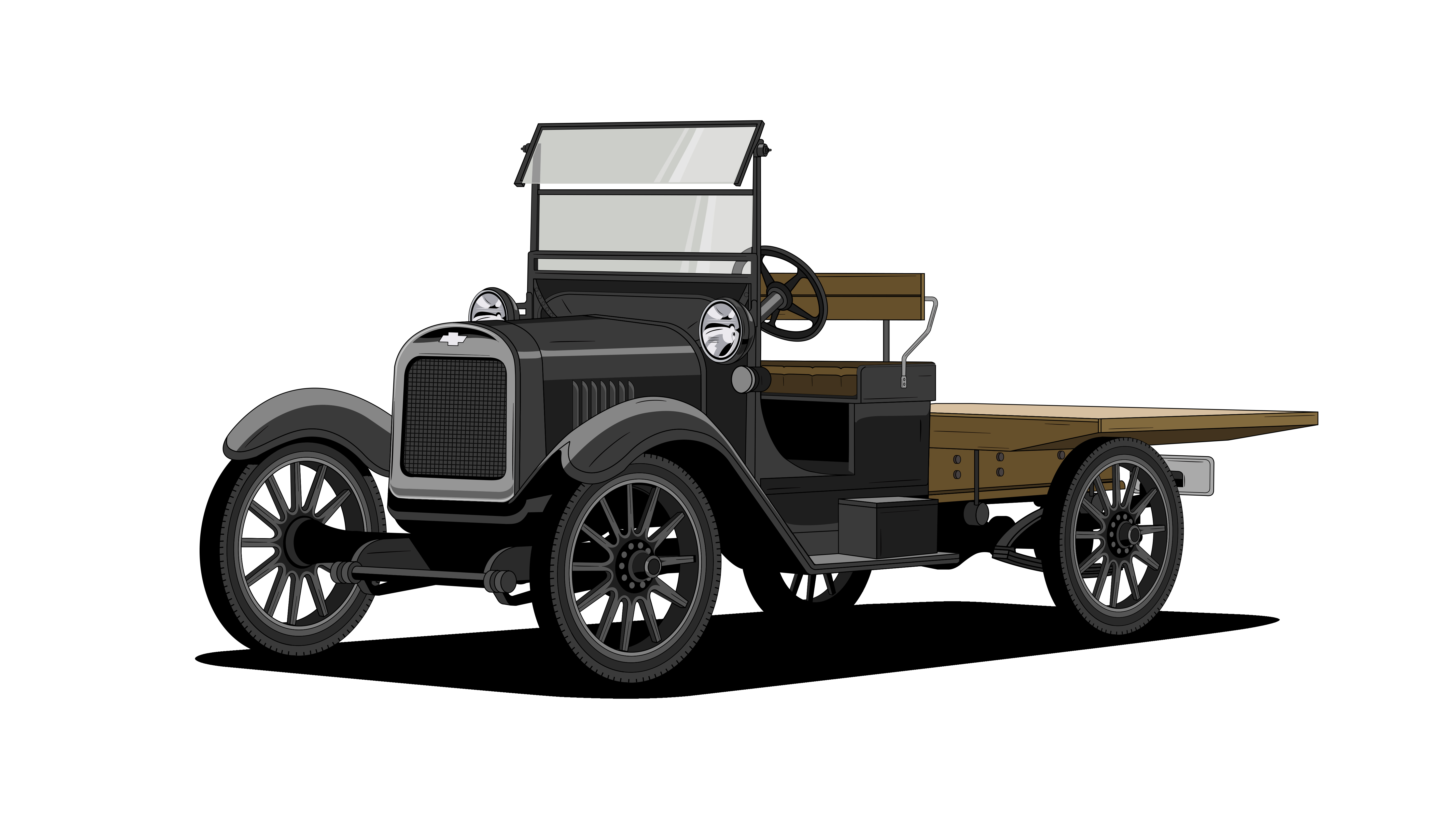
One of those was the Martin-Parry Company of Indianapolis. Chevrolet bought that firm in late 1930, and thanks to that, for the first time, buyers could order a complete pickup truck from the factory.
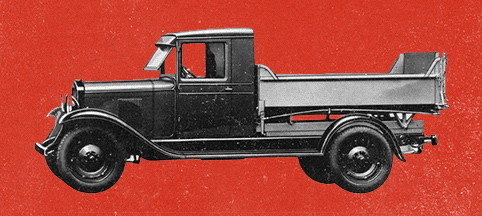
Chevy would also take its half-ton chassis in 1935 and add a wagon-style body that held eight passengers; it was called the Suburban Carryall and is generally considered to be the first SUV. The following year, you could get a “Commercial Car,” which was a Chevy coupe with the trunk lid removed and a short pickup bed sticking out the back, popular with salesmen and which lasted until 1942. That’s when all American automakers ended civilian vehicle production to make military supplies for the Second World War.

When production resumed for the 1946 models, Chevrolet’s trucks looked like they did before the war. But in early 1947, Chevy unveiled a new truck, the 3100 Series, with its “Advanced Design” featuring smoother styling and a five-bar horizontal grille. It would stick around, with just some styling tweaks over the years, until the next all-new truck debuted for 1955.
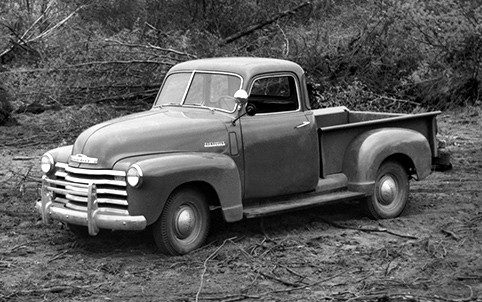
Here are some other interesting tidbits about Chevy’s trucks…
- The 1918 one-ton cowl-and-chassis cost $1,325. You could also get it as an “Express,” with a flat floor behind the driver for $1,460, or add four posts with a curtain top for $1,545. That was pricier than the U.S. average yearly income of $1,518.
- In 1929, Chevrolet introduced a new 194-cubic-inch six-cylinder engine with overhead valves, making 46 horsepower and replacing the previous four-cylinder in its cars and light truck chassis. It was fondly known as the “Cast Iron Wonder,” or as the “Stovebolt Six,” because its bolts looked like those on a woodstove. It helped lift Chevrolet to a new sales record that year, and it was used in trucks until 1933, when it was replaced with the 206.8-cubic-inch “Blue Flame” six-cylinder, making 56 horsepower.
- In 1937, Chevrolet redesigned everything in both its car and truck lines. The trucks now had all-steel cabs and smoother styling.
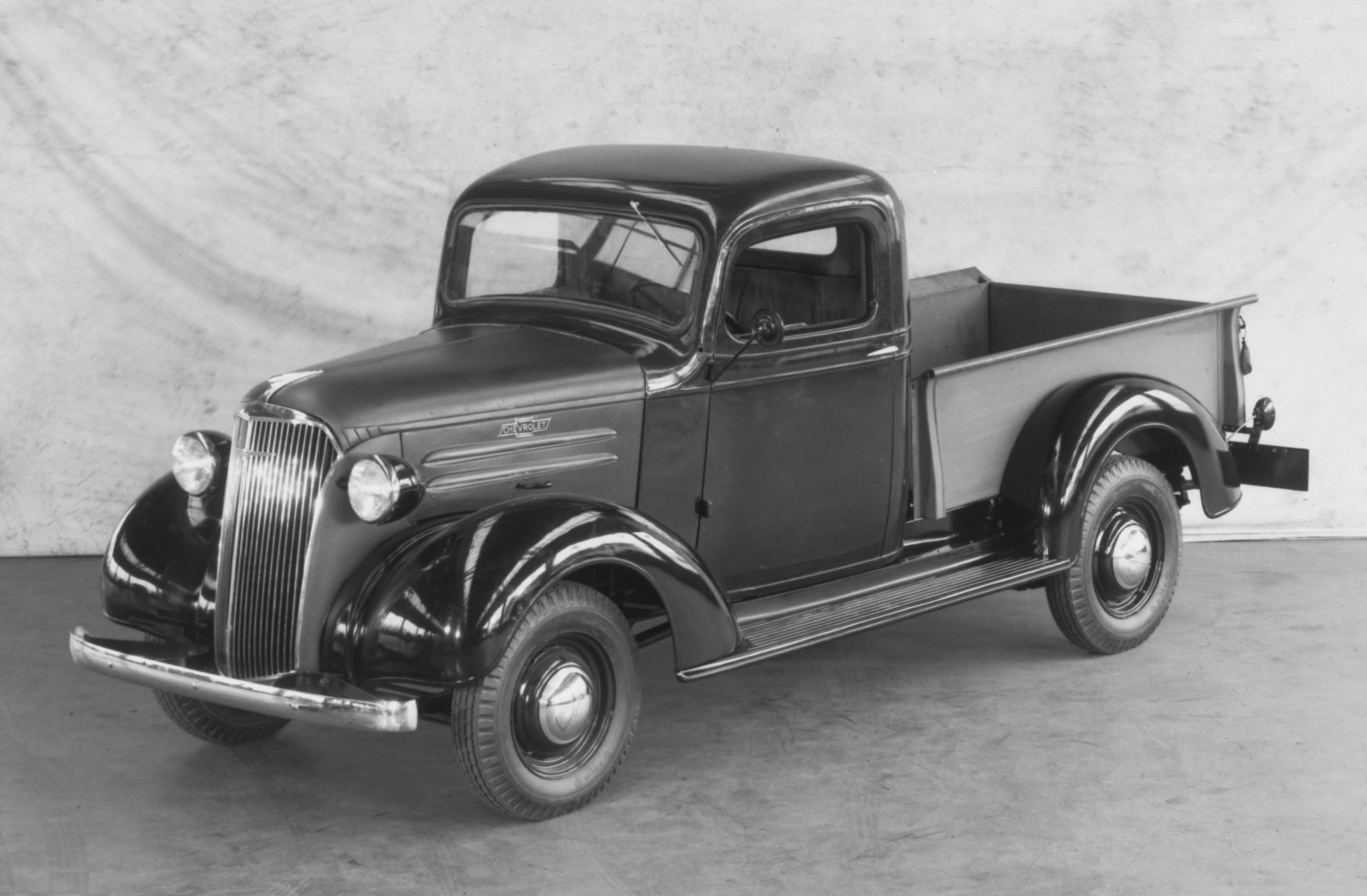
- The new postwar Chevy pickup trucks went on sale in June 1947 and were a radical change from the 1942/1946 trucks they replaced. Most cars, from all manufacturers, weren’t redesigned until 1948 or later.
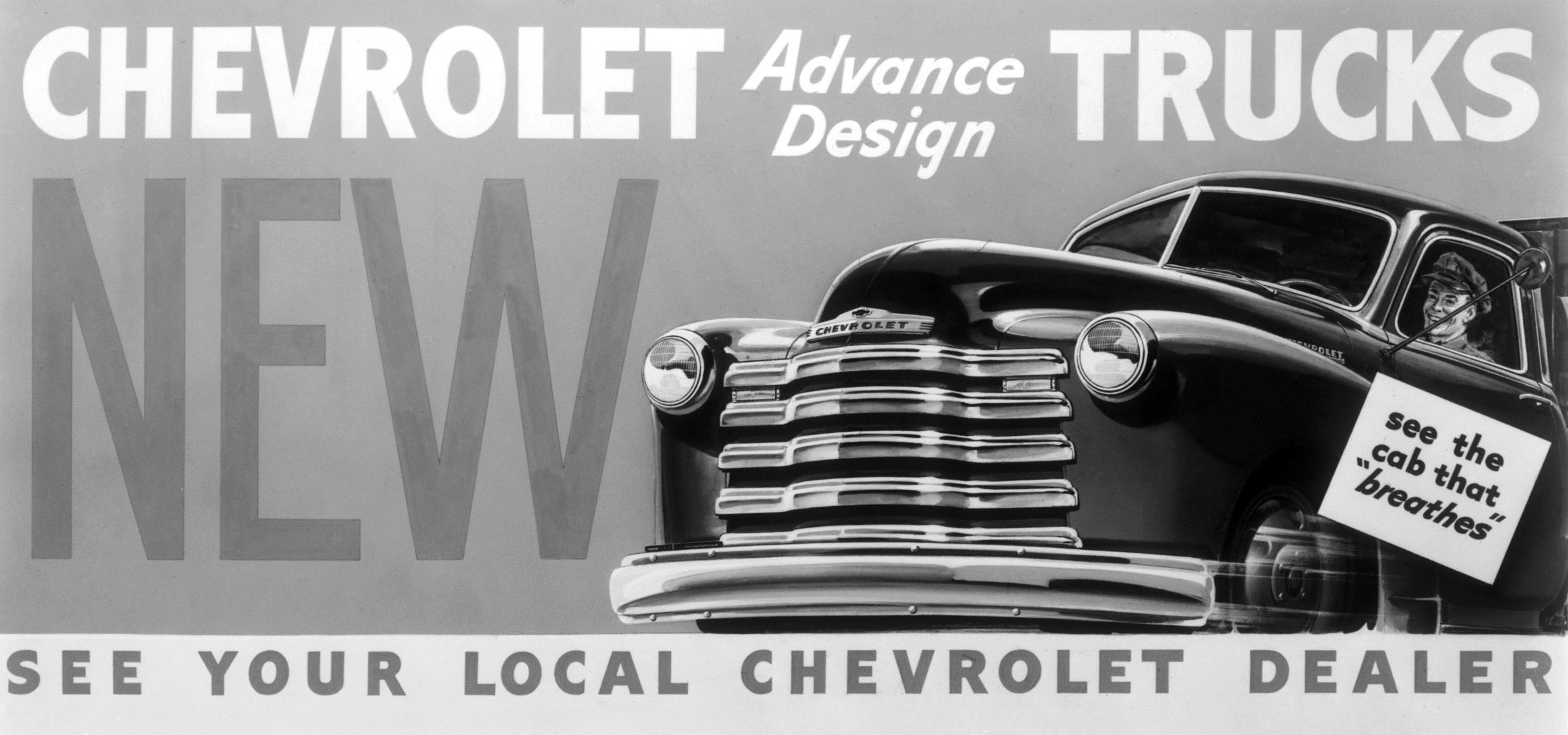
- The 1947 trucks were divided into the Chevy truck 3100 half-ton; the 3600 three-quarter-ton; and 3800 one-ton. New features on these trucks included a fresh-air heater and defroster, cab corner windows, and an in-dash radio. The new wider, longer cab also comfortably sat three people, which was a tight squeeze in older trucks.
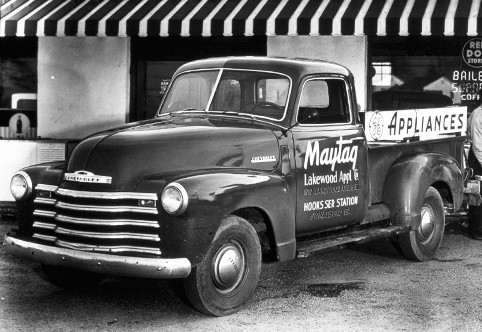
Chevy’s earliest trucks mostly appeal to specialized antique-truck fans, and the Commercial Cars, with their trunk-mounted pickup beds, are rare and hard to find. From there, Chevy’s pre-1950 trucks are beloved by their owners and draw fans at car shows. With their car-like profiles, the restyled 1937 trucks are popular as hot rods, as are the 1941 models that had new front-end styling with horizontal chrome strips on the hood, and wide matching grilles with vertical chrome. The 1947 trucks have a fan base all their own, especially since they slipped over into the 1950s and led the way into that era. And from 1937 on, it’s relatively easy to find chevy pickup parts to make sure they get to the cruise night every week.
